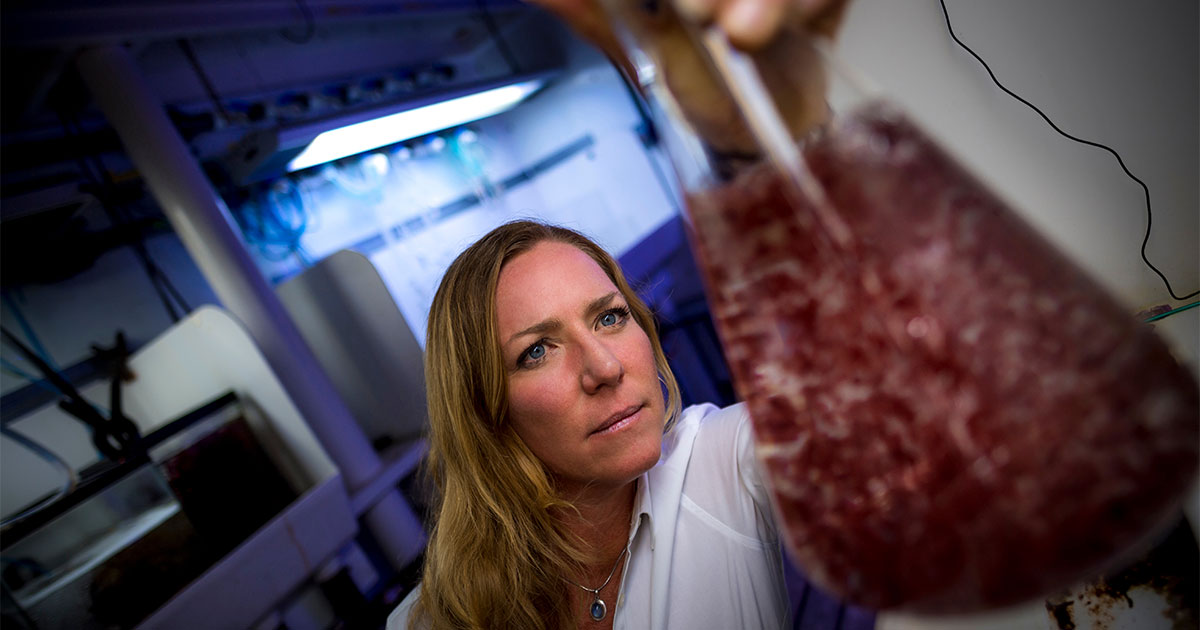Marine scientists at Scripps Institution of Oceanography at UC San Diego are on a mission to reveal the secrets of seaweeds, including several species found in waters just off the La Jolla, California-based campus.
Seaweeds represent a multi-billion-dollar industry around the world and are a source of many materials spanning the chemical and food sectors. In fact, you can find seaweed, or marine algae, and its extracts in products ranging from cosmetics and medicines to fertilizers and foods. It’s clear that seaweed is a valuable commodity, but can it also be used to help solve environmental challenges?
Researchers at Scripps Oceanography have several projects underway that explore this question. This promising research includes a project focused on cultivating a seaweed known to reduce cow burps—a leading source of methane emissions, and work exploring seaweed genome diversity—which could help inform the making of bio-based fuels, chemicals, and other materials.
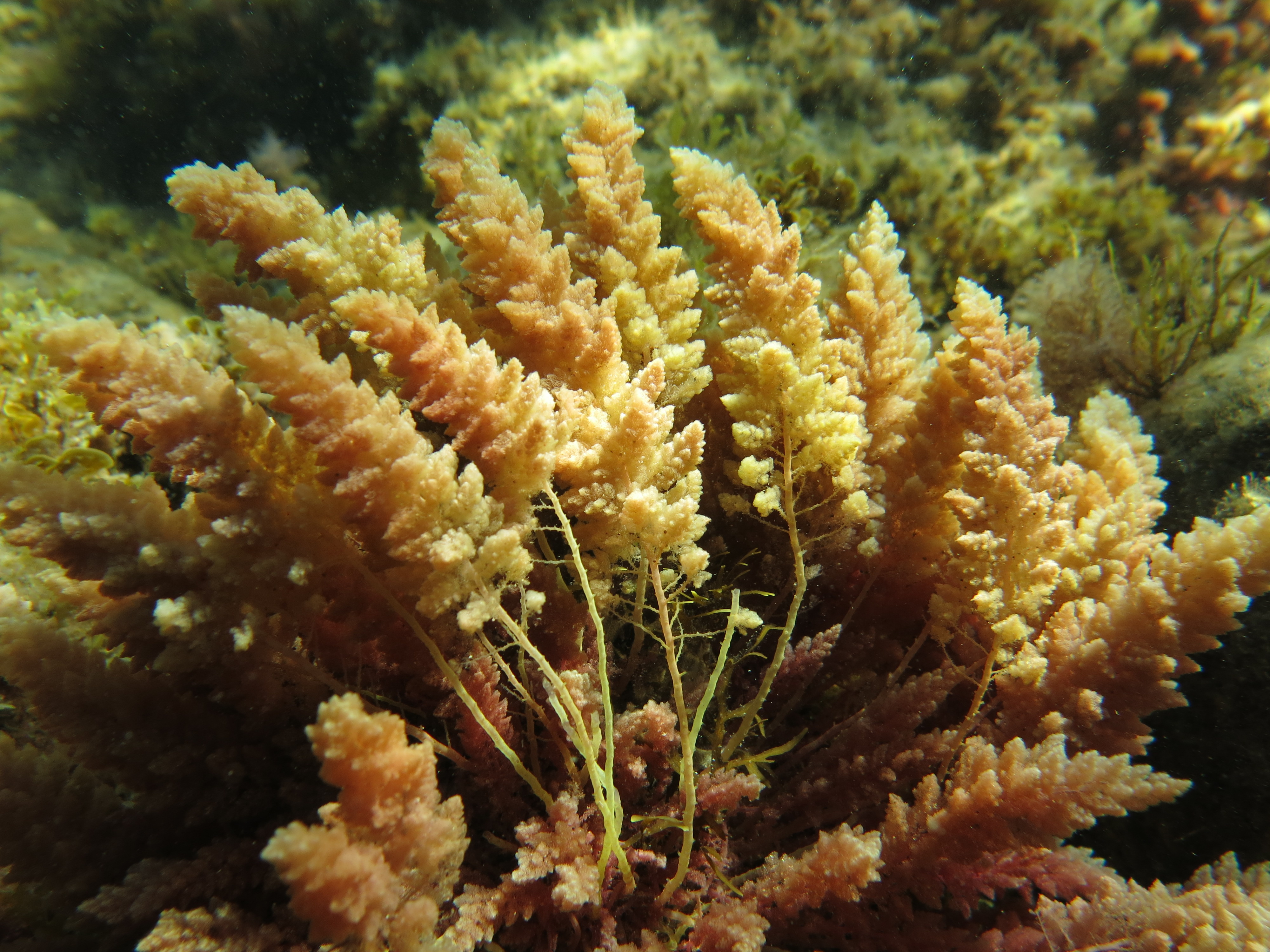
(Image credit: Jennifer Smith)
Other Scripps-led projects seek to sustainably cultivate top quality seaweeds for culinary use, while across campus, a UC San Diego team has been collaborating on creating flip-flops using algae-based materials.
As seaweed research takes center stage, we shine a light on two of these innovative studies to find out what’s in store.
Cow Burps and Climate Change
Over the past several years, agricultural and marine scientists across the University of California system have joined forces to combat methane emissions from gassy cattle (and other ruminant animals including sheep and goats). Their weapon of choice? Asparagopsis taxiformis. This red algae is a seaweed known by scientists for its ability to produce a compound that could halt bovine production of methane, a powerful greenhouse gas that is 30 times more potent than carbon dioxide.
In California alone, more than half of all methane emissions come from the state’s 1.8 million dairy cows as they burp, exhale, pass gas, and produce manure. Of these cattle-related emissions, belches pack the most punch, accounting for roughly 95 percent of the methane released into the environment during cattle digestion.
Jennifer Smith, a marine ecologist and seaweed expert at Scripps, was intrigued by a UC Davis study in which small amounts of dried Asparagopsis seaweed were added to cattle feed. Results from the study, published in 2018, showed a remarkably promising 50-percent reduction in methane emissions from dairy cows. While these results are impressive, little is known about whether growing enough seaweed to meet industry demand is possible.
Smith set herself to find out. Seeking an opportunity for collaboration, she reached out to lead author Ermias Kebreab, an animal science professor at UC Davis, and was met with enthusiasm. Since early 2019, Smith has been growing Asparagopsis in her lab and exploring the potential for cultivation on a larger scale.
“I'm really excited about all of the research opportunities that lie ahead to essentially understand the complexities of this beautiful red seaweed and to try to understand how we might be able to use it to mitigate methane production in cattle,” said Smith, professor at the Center for Marine Biodiversity and Conservation at Scripps.
The Asparagopsis samples housed in the Smith Lab are presented in a dazzling array of bubbling flasks filled with what looks like tiny pink pom poms moving wildly about. These little pink balls are actually algae in the sporophyte phase of growth; just one of the three phases that exist in this alga’s life cycle.
Smith is working to find the “sweet spot” where the seaweed grows at its highest rate while also increasing its concentration of bromoform—the compound primarily responsible for reducing methane-making enzymes in a cow’s gut.
As the seaweed operation has continued to grow, so has the lab space required to house it. Smith recently expanded the footprint of the indoor lab and started using a new outdoor facility that houses six large 250-liter tanks of seawater and various sun tubes. The samples are moved to these larger outdoor tanks before they are harvested.
Recently Smith has been working as a science advisor for Blue Ocean Barns, a startup that is focused on scaling up the production of Asparagopsis at strategic sites around the United States, including San Diego and Hawaii. Blue Ocean Barns plans to do the first commercial feeding trial with Asparagopsis on an operating dairy farm, and that study would use some of the seaweed grown in Smith’s lab.
“Our little setup at Scripps with six tanks, it's just the pilot,” said Smith. “I will not personally be growing all the seaweed that's going to feed all of the cows around the world, but I am helping to develop the approach and the technology development needed to grow the seaweed in the most efficient and sustainable way, at scale.”
In the spring of 2021, UC Davis published another study which found that Asparagopsis added to cattle feed could reduce methane emissions—this time from beef cattle by as much as 82 percent. Smith called the work an important milestone, and said she is proud to be contributing to research that could have swift impacts on the environment. Methane has a relatively short life span in the atmosphere—about 10 years—meaning changes made today could yield big results in the near future.
“The opportunity to manage methane emissions from cow burps had never really been on the table at any relevant scale,” said Smith. “But this unusual collaboration—a marine biologist working with the livestock industry and livestock scientists—might have a major influence on greenhouse gas emissions.” She adds, “It’s a crazy marriage of totally disparate fields of science and I’m really excited to be part of that.”
Unraveling the Complex Chemistry of Seaweeds
Tide pools are a popular place to see marine life ranging from hermit crabs and octopus to small fishes and sea anemones. But beyond the scene-stealing marine critters—if you look a little closer—you will often find seaweed, and lots of it.
Researchers at UC San Diego are now taking a closer look at some locally found seaweeds in a first-of-its-kind project that explores seaweed genome diversity. Funded by the Joint Genome Institute (JGI), this research is led by marine chemist Bradley Moore and members of his lab at Scripps Oceanography.
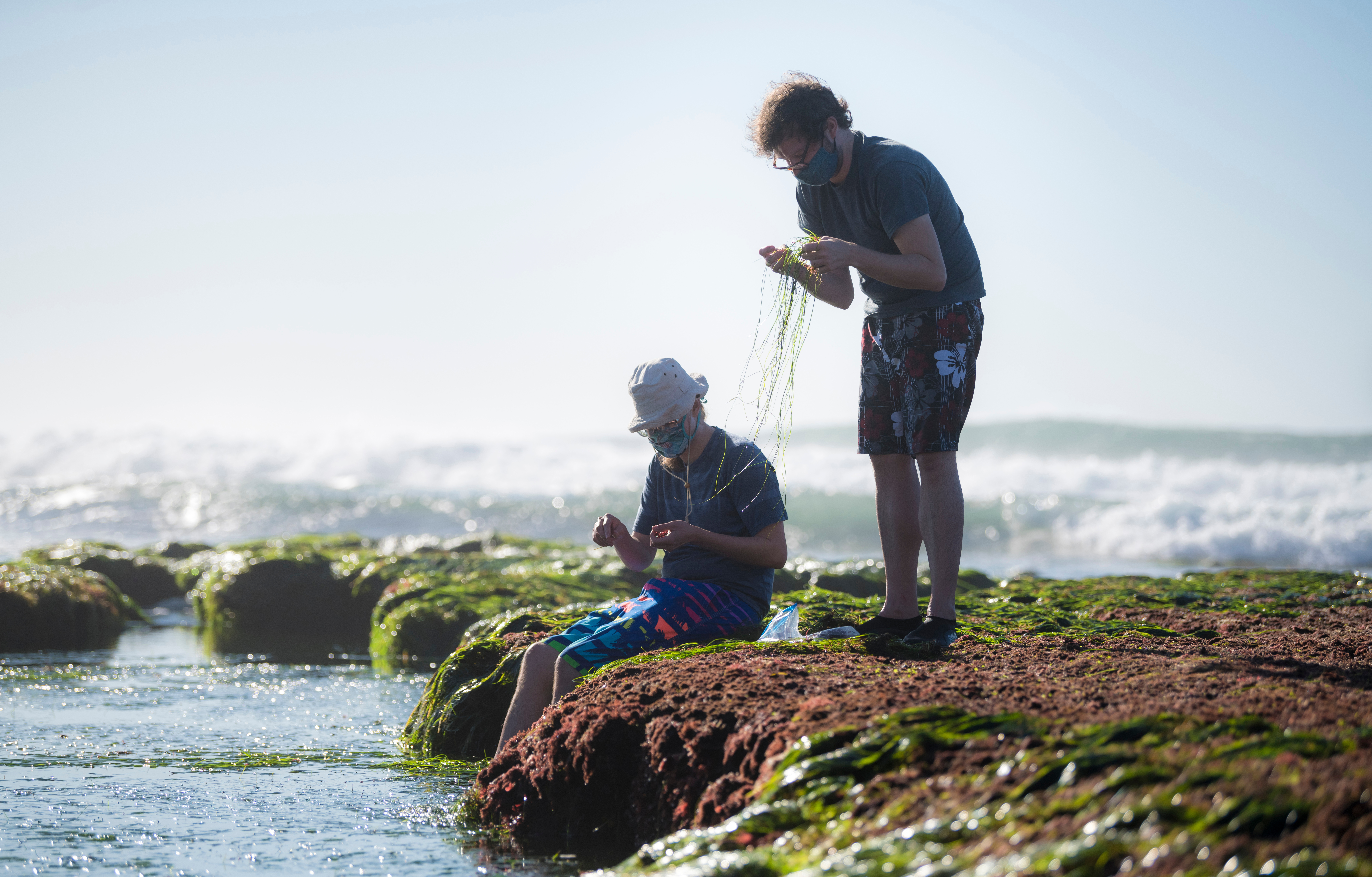
(Image credit: Erik Jepsen, UC San Diego)
Since the project began in 2019, researchers in the Moore Lab have been working to unravel the complex chemistry of seaweeds, particularly how they construct certain molecules that could have important applications in fields such as manufacturing and medicine. The team is currently working with the JGI to sequence the genomes of 10 different types of biosynthetically “gifted" red seaweeds found in San Diego, something that has never been done before.
“Many chemicals naturally produced by our local seaweeds are unique to red algae and are not found in other organisms on our planet,” said Moore, a professor of marine biotechnology and biomedicine at Scripps and the Skaggs School of Pharmacy at UC San Diego. “So that fascinates me as a chemist and geneticist with the additional goal to apply the metabolic secrets of seaweeds to help solve societal challenges.”
By understanding how seaweeds work on a molecular level, this project could help natural products researchers harness seaweeds' biosynthetic machinery in the biomanufacturing of fuels, lubricants, polymers, and other commodity and specialty chemicals.
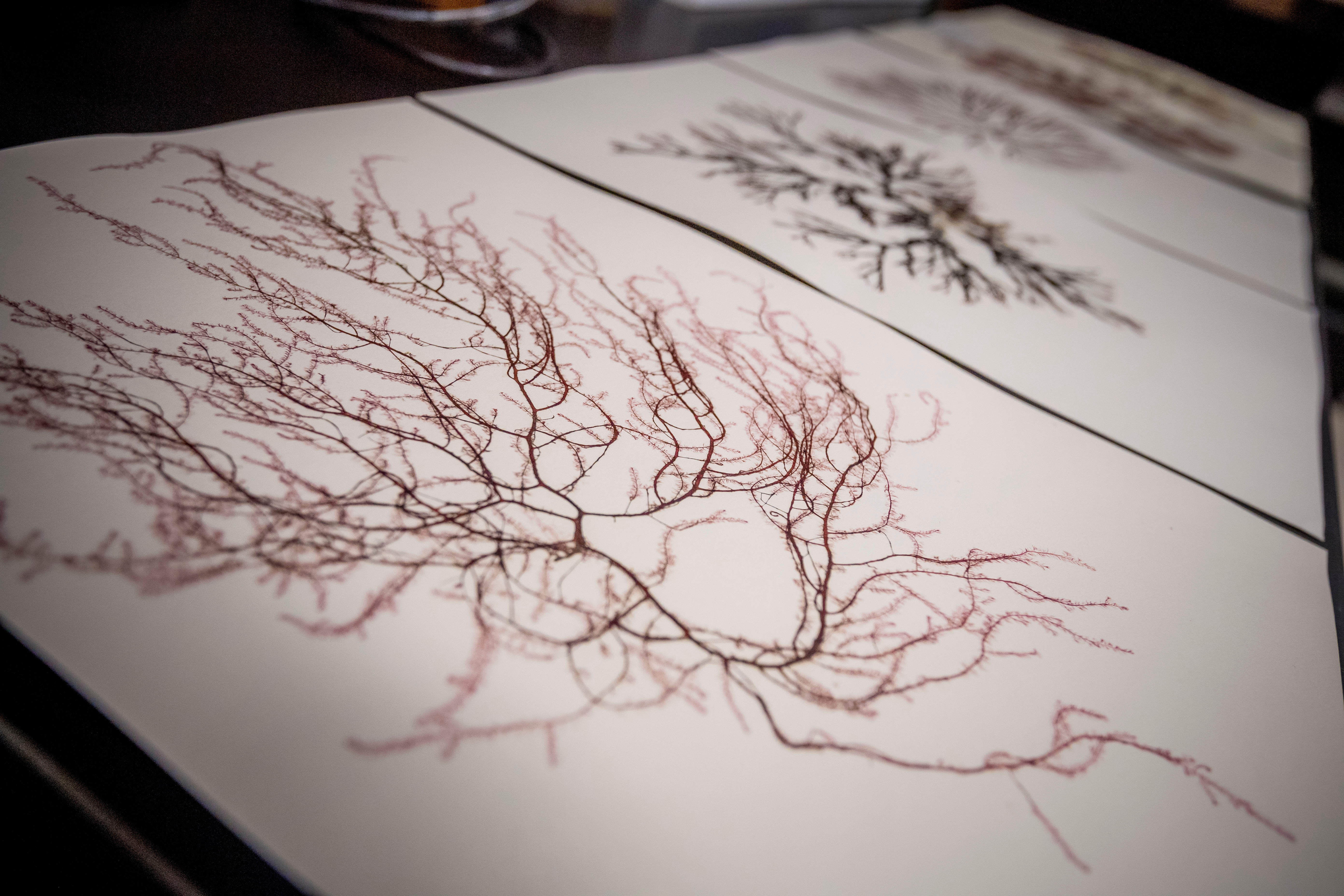
(Image credit: Erik Jepsen, UC San Diego)
“As our economy moves to more of a bio-based future less reliant on fossil fuels, we scientists are looking to nature to learn how they make many of the same materials that we need in society, yet not from petrochemicals but via photosynthesis,” said Moore, noting that he sees many upsides "in making bio-based materials, pharmaceuticals, agriculture products, and more to support our growing economy.”
This project builds upon groundbreaking work done in the 1970s by Scripps scientists William Fenical and the late D. John Faulkner, who first collected and characterized red seaweeds. The Moore Lab is now revisiting this initial work with fresh eyes and taking it a step further using genome sequencing, a process which tells scientists the kind of genetic information that is carried in a particular DNA segment.
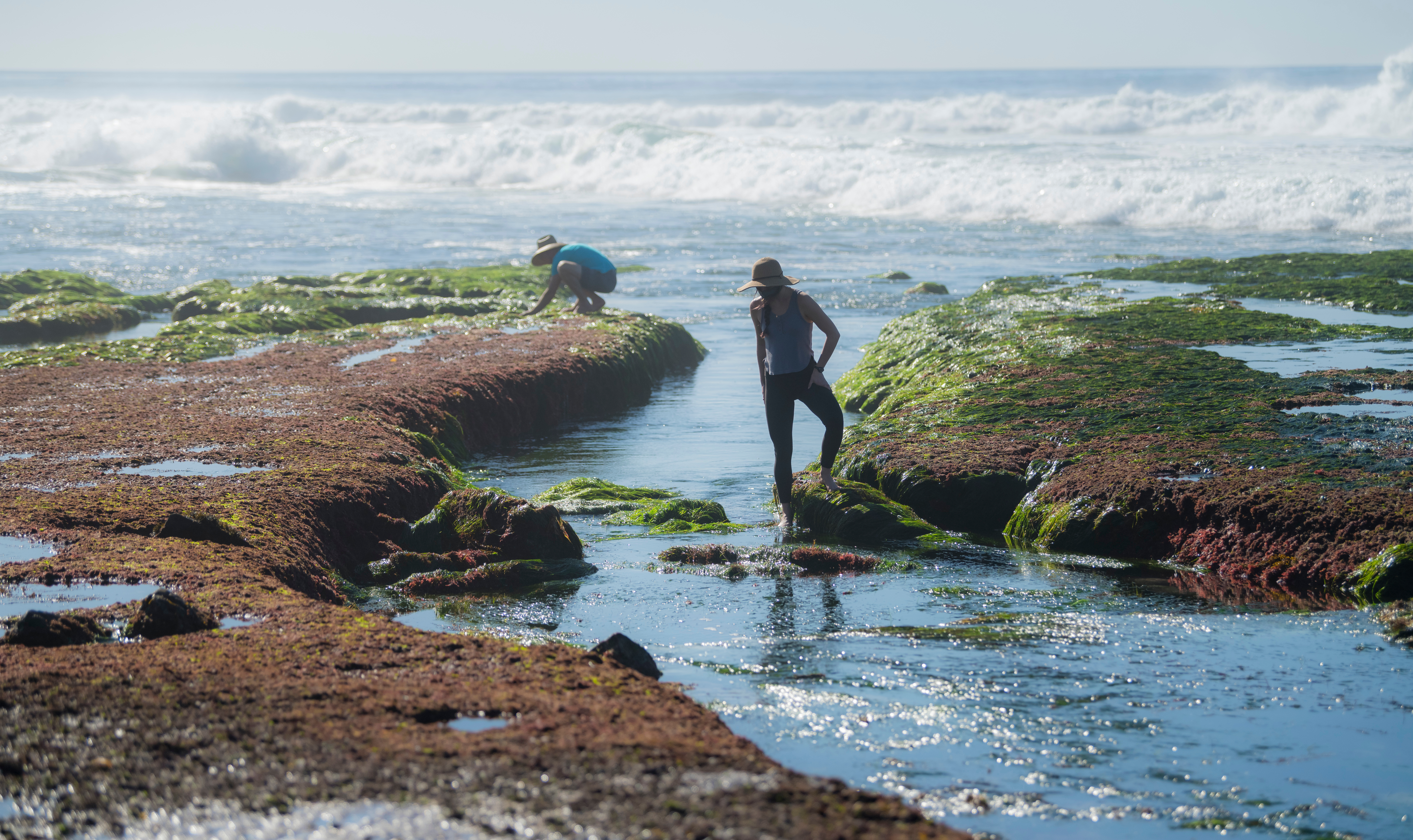
(Image credit: Erik Jepsen, UC San Diego)
Red seaweeds are of interest to marine chemists because certain types are known for their incredible ability to utilize halogens, a group of non-metallic elements that includes bromine and chlorine. The main focus of this genome sequencing project is to discover how some “chemically interesting” seaweeds are able to incorporate halogens onto the molecules that they produce—molecules that hold promise for applications such as pharmaceuticals.
“The seaweeds we study are talented producers of an interesting suite of bioactive molecules,” said Taylor Steele, a member of the Moore Lab and PhD student in the Department of Chemistry and Biochemistry at UC San Diego. “We’re interested in the biochemistry of these seaweeds, and how we are able to re-purpose this biosynthetic machinery for other biotechnological applications. It's almost like molecular Legos.”
During a recent field outing, several members of the Moore Lab collected seaweed samples from the tide pools in La Jolla. Once they found a viable sample, they would clean it and prepare the sample to be sent to the JGI for genome sequencing. Once received, the sequencing results are further analyzed at Scripps.
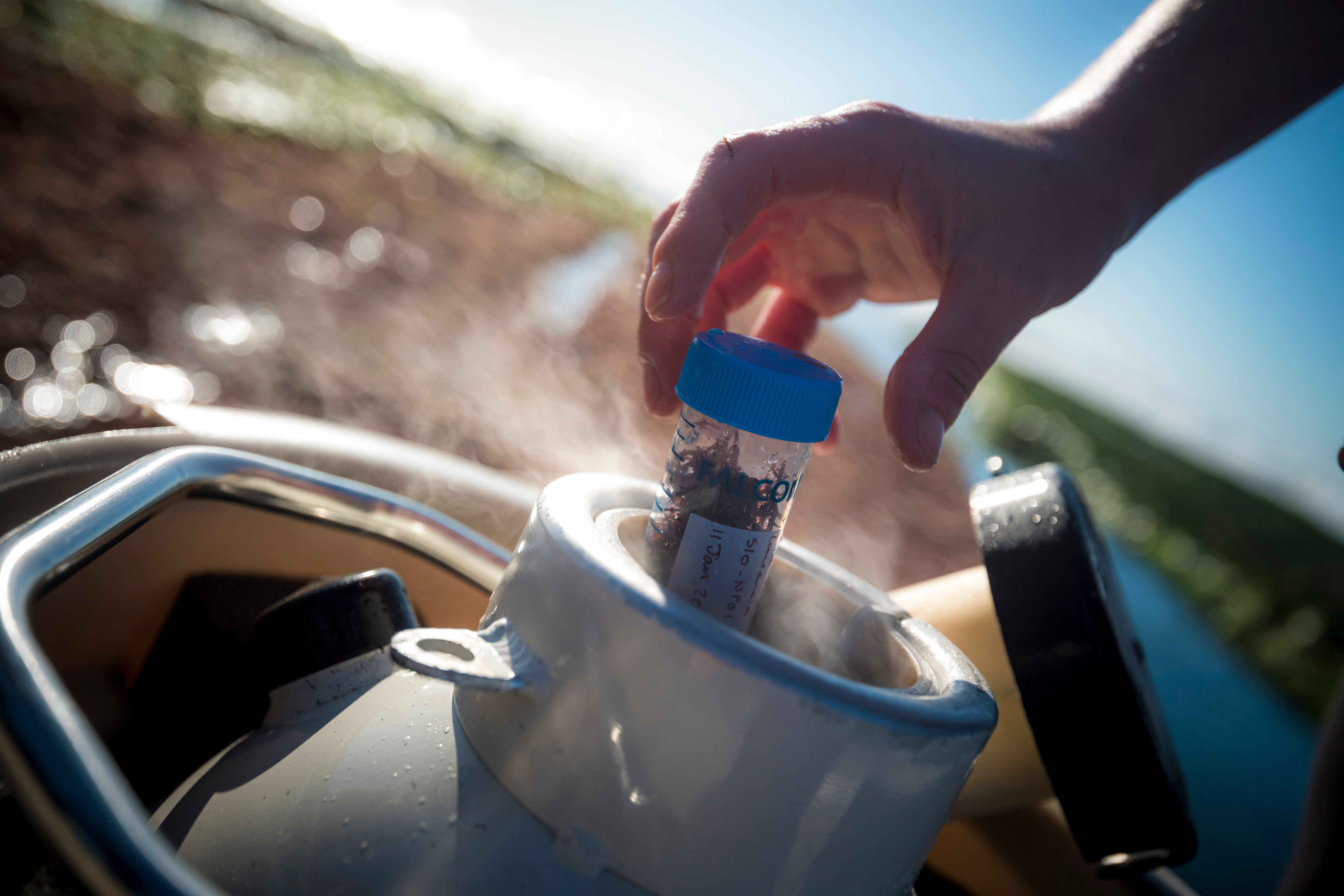
(Image credit: Erik Jepsen, UC San Diego)
So far, Steele has made progress on sequencing three types of red seaweeds, with two more in the pipeline, and five others to be done in the near future with help from others in the lab. The project will be completed in 2022, but Steele said it will hopefully leave a “pile of genomes” that will enable future research.
“We are in a genomics era, and it has been fun to apply this technology to red seaweeds, a very understudied group of organisms,” said Steele. “My hope is that we can contribute these genomes to the community as a resource for future work.”
This feature appeared in Environment, Coastal & Offshore (ECO) Magazine's 2021 Summer edition, to read more access the magazine here.


